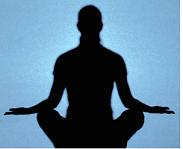Yoga
'Yoga wars' spoil spirit of ancient practice, Indian agency says
 Heard of Naked Yoga? Kosher Yoga? Yoga for Carpal Tunnel Syndrome?
Heard of Naked Yoga? Kosher Yoga? Yoga for Carpal Tunnel Syndrome?
More than 30 million Americans practice some sort of yoga in an ever-expanding industry generating an estimated $6 billion in the United States alone.
But in the birthplace of yoga, an Indian government agency is fighting what it calls "yoga theft" after several U.S. companies said they wanted to copyright or patent their versions. Yoga is a part of humanity's shared knowledge, the agency says, and any business claiming the postures as its own is violating the very spirit of the ancient practice.
India's Traditional Knowledge Digital Library has gathered a team of yogis from nine schools and 200 scientists to scan ancient texts, including the writings of Patanjali, thought to be the original compiler of yoga sutras. The group is documenting more than 900 yoga postures and making a video catalogue of 250 of the most popular ones, from sun salutation to downward-facing dog.
The catalogue will be released next month and given to the international patent system, which yoga gurus in India say is essential in an age when cultural traditions can cross borders instantaneously.
"Yoga is collective knowledge and is available for use by everybody no matter what the interpretation," said V.K. Gupta, head of the digital library, which was set up by the ministries of health and science. "It would be very inappropriate if some companies try to prevent others from any yoga practice, even if they call it some other name. So we wanted to ensure that, in the future, nobody will be able to claim that he has created a yoga posture which was actually already created in 2500 B.C. in India."
The library has documented other traditional Indian knowledge, including ayurvedic treatments and homeopathy. Tens of thousands of yoga postures have been compiled, but many are not widely practiced.
"This collection is very successful in preventing wrong patent information, but it is available in 34 million pages," Gupta said with a chuckle. "We are trying to shorten the yoga catalogue to make it very easy for the world to understand."
The poses, now listed in Sanskrit, will be translated into English, German, French, Spanish and Japanese. Gupta's library has agreements with U.S. and European patent offices, and Gupta said he hopes that U.S. patent officers will refer yoga studios directly to his information.
Popularized in the United States by Beatles guitarist George Harrison, yoga has moved into the mainstream and now includes yoga vacations, children's camps, retreats, books, magazines, CDs, trendy clothing, pricey jewelry, cookbooks and even dating services.
Yoga wars, as they are known, started in 2004 in Beverly Hills when Calcutta-born yoga master Bikram Choudhury claimed as his intellectual property a sequence of 26 postures that his students performed in a room heated to 105 degrees. He attempted to collect money from smaller studios offering "Hot Yoga" classes.
Open Source Yoga Unity, a San Francisco-based nonprofit group of yoga enthusiasts, filed a federal lawsuit against Choudhury's patent. The lawsuit resulted in a confidential settlement agreement.
Today, Choudhury's form of yoga is taught at more than 400 centers from Washington to Paris. His net worth is unofficially estimated at $7 million.
The U.S. Patent and Trademark Office has granted at least 131 patents on the subject of yoga, most for books and yoga mats. The database of registered and pending trademarks lists 3,700 trademarks but no specific patents on postures or variations of postures, the government agency said.
In India, yoga used to be free, practiced in public parks and ashrams. It was typically part of a Hindu religious commitment to an austere life and seen as a practice for ash-smeared holy men in loincloths who were vegetarians, abstained from alcohol, and prayed, meditated and chanted for more than four hours a day.
But yoga has entered the mainstream in India, and millions of people practice in studios. The government has encouraged the army to teach supple poses to stressed-out officers in the disputed region of Kashmir. Hundreds of Mumbai residents practiced outside in a show of unity after the 2008 terrorist attack. Prisoners in the state of Madhya Pradesh can receive an early release if they complete a meditative breathing and stretching yoga course, which is said to be excellent for anger management.
At her popular Iyengar yoga class at her home in New Delhi, instructor Nischint Singh, 42, said that yoga was originally meant to soothe shattered souls and teach breathing known as pranayama, and that she always thought it should be open to everyone.
"Yoga is for developing a connection with yourself. It's meant to be meditative," she said before a recent class. "But today it's being sold as a way of weight loss and a way to look younger. The actual originators of yoga are not even alive. Everything people are doing today is just following them."
(Published by The Washington Post – August 23, 2010)